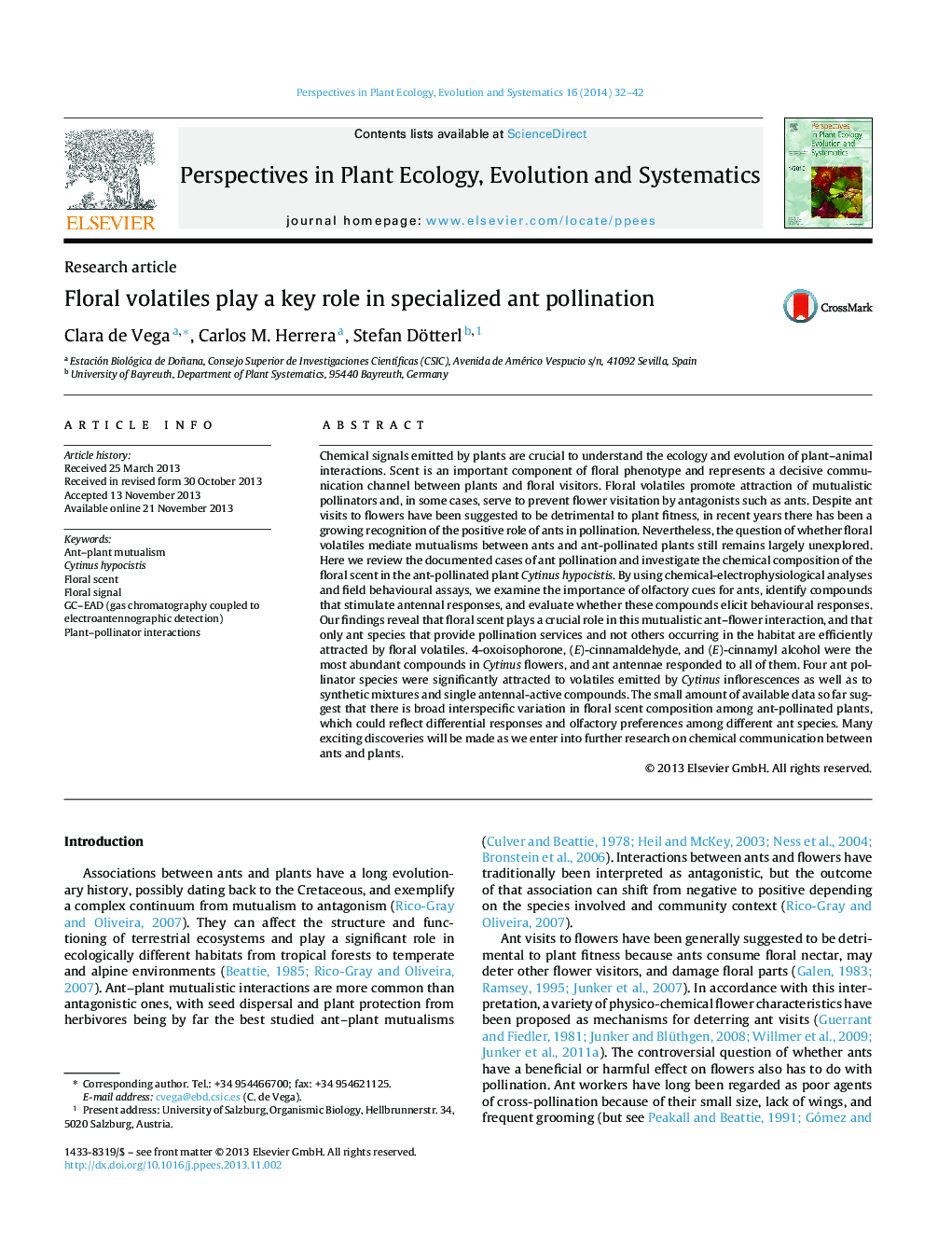| Article ID | Journal | Published Year | Pages | File Type |
|---|---|---|---|---|
| 4401006 | Perspectives in Plant Ecology, Evolution and Systematics | 2014 | 11 Pages |
Chemical signals emitted by plants are crucial to understand the ecology and evolution of plant–animal interactions. Scent is an important component of floral phenotype and represents a decisive communication channel between plants and floral visitors. Floral volatiles promote attraction of mutualistic pollinators and, in some cases, serve to prevent flower visitation by antagonists such as ants. Despite ant visits to flowers have been suggested to be detrimental to plant fitness, in recent years there has been a growing recognition of the positive role of ants in pollination. Nevertheless, the question of whether floral volatiles mediate mutualisms between ants and ant-pollinated plants still remains largely unexplored. Here we review the documented cases of ant pollination and investigate the chemical composition of the floral scent in the ant-pollinated plant Cytinus hypocistis. By using chemical-electrophysiological analyses and field behavioural assays, we examine the importance of olfactory cues for ants, identify compounds that stimulate antennal responses, and evaluate whether these compounds elicit behavioural responses. Our findings reveal that floral scent plays a crucial role in this mutualistic ant–flower interaction, and that only ant species that provide pollination services and not others occurring in the habitat are efficiently attracted by floral volatiles. 4-oxoisophorone, (E)-cinnamaldehyde, and (E)-cinnamyl alcohol were the most abundant compounds in Cytinus flowers, and ant antennae responded to all of them. Four ant pollinator species were significantly attracted to volatiles emitted by Cytinus inflorescences as well as to synthetic mixtures and single antennal-active compounds. The small amount of available data so far suggest that there is broad interspecific variation in floral scent composition among ant-pollinated plants, which could reflect differential responses and olfactory preferences among different ant species. Many exciting discoveries will be made as we enter into further research on chemical communication between ants and plants.
